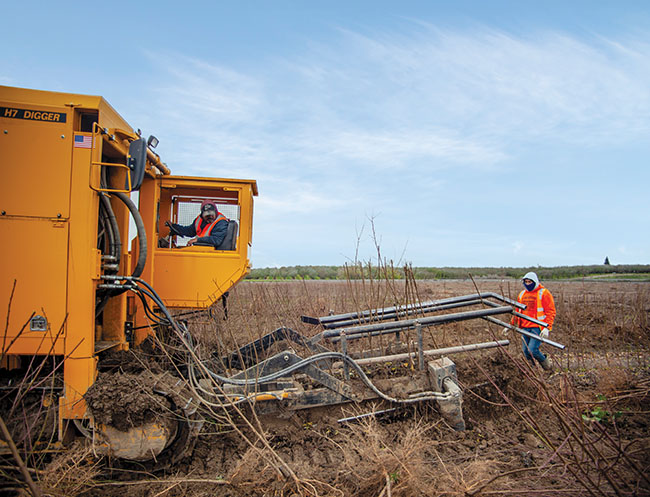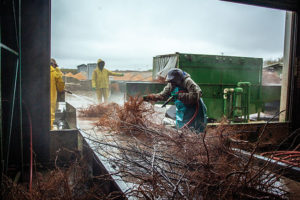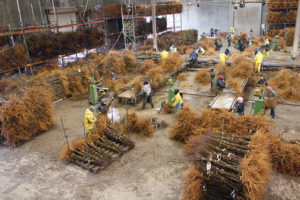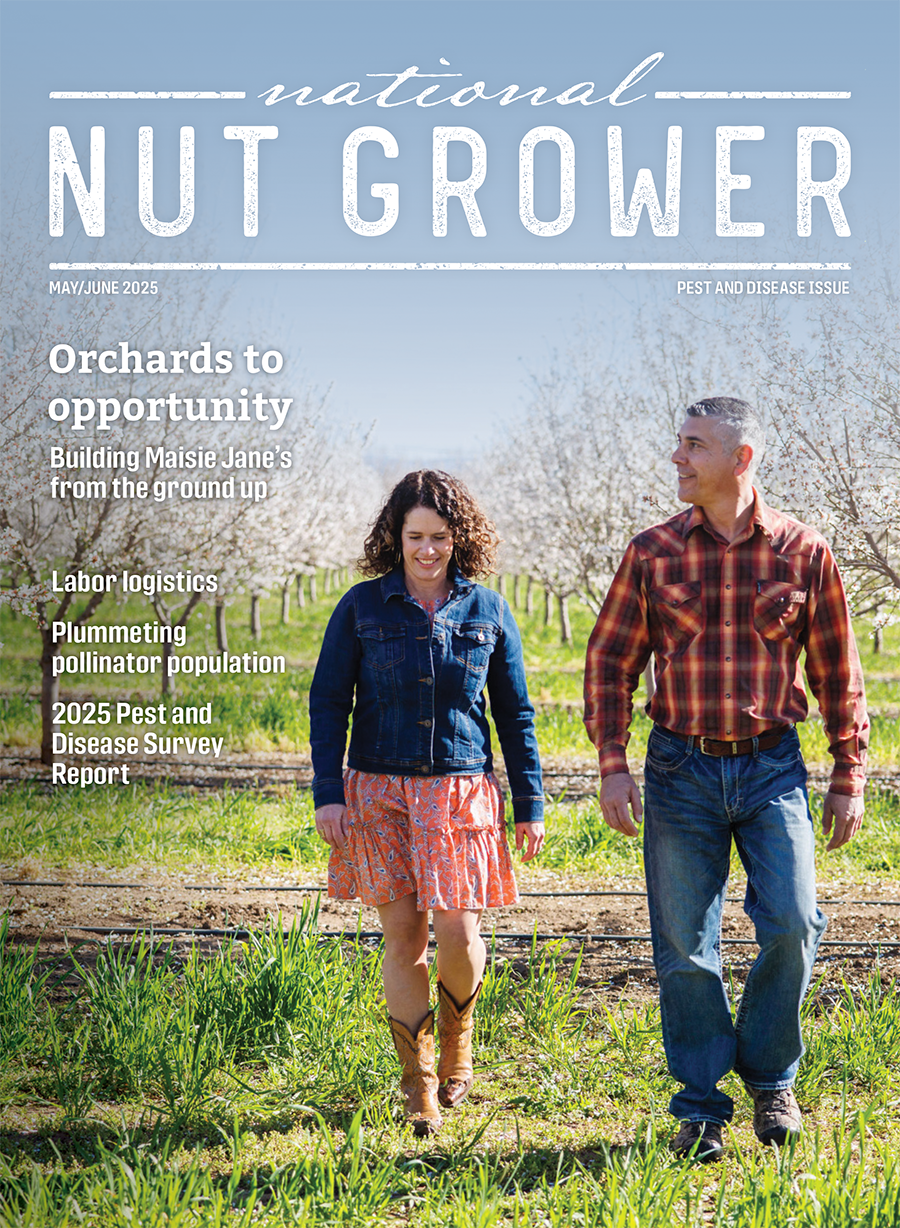
Jan/Feb 2022
Inside the nursery: Digging season
Just like the fruits and nuts from a grower’s field don’t just magically appear on grocery store shelves, the trees in the orchards themselves also underwent a process to arrive there. Behind every end product is an involved process, and behind every orchard is a nursery that produced those new trees.
And in that process, it’s estimated that a single new tree has already been handled about 25-30 times before it arrives to a grower.
It isn’t a quick process, either, and is dependent on equal parts past experience and foresight, accounting for margin of error in predicting what the trends in farming will be, and how many trees will need to be planted.
National Nut Grower decided to take a peek inside the nursery, to share the processes – from planting to budding to delivery – with growers over the course of the season.

Intense farming
Growing rootstock is a 14-month- long process, where fields are prepped in the summer, seed is planted in the fall, trees are dug up the following winter and planted permanently before spring’s arrival. It’s a busy cycle of state law-mandated fumigated fields, annual irrigation installations, marked identification of every single tree, and scheduling deliveries.
Digging trees is a compact window – December-February – and then the trees must go somewhere. By now, new rootstock or budded trees are starting to arrive at their destinations, packed in crates and covered with sawdust if bare root. If growers are ready, the trees are shipped to their fields. If not, the trees can be moved to a new section of ground early in the digging season and temporarily replanted while the weather is still cool, or they are shipped to cold storage to continue simulating winter if spring is approaching.
Depending on the year, especially if it’s a particularly wet year, trees will end up in cold storage simply because growers can’t get into their fields because of the rain or mud. The goal is to prevent the trees from “waking up” before they’re in their permanent location.
But just a few months ago, those trees were dug from the ground – to the tune of 80,000 trees per day at this Burchell Nursery location, with some days reaching 100,000 trees.
It’s common practice for nurseries to rotate their fields. Burchell’s, for example, is done in 200-acre blocks, allowing a recently dug field to rest for a couple of years before being replanted. With trees planted 6 inches apart and beds spaced 52 inches apart, it’s very intense farming that demands a lot from the soil.
Multiplied to 3 million trees at capacity, letting the ground rest becomes imperative.

To the grower
At this nursery, there are about 700 different varieties, with each looking the same as its neighbor during the leafless months of dormancy. Each tree – with the occasional exception of the majority variety, such as Nonpareil for almond or Chandler for walnut – is color-coded and typically hand painted or machine sprayed with the appropriate color combinations.
In the field, a nursery digger goes beneath the ground’s surface and below the tree’s root zone, lifting it out of the ground, which, ideally, is pretty soft in the winter. The trees are briefly and vigorously shaken as they’re lifted out of the ground, and then inspected by hand to shake out any additional soil or mud before they’re stacked on a truck to be hauled out of the field and into the warehouse.
Once at the warehouse, they’re unloaded and rinsed clean, with any broken or unfit trees discarded, then they’re sorted, bundled and stacked. Some will ship promptly, others will wait and be held temporarily in the warehouse. Inside, this warehouse can store about 800,000 trees.
A nursery digger during the digging up of new rootstock. Photo: Matt Hannon









